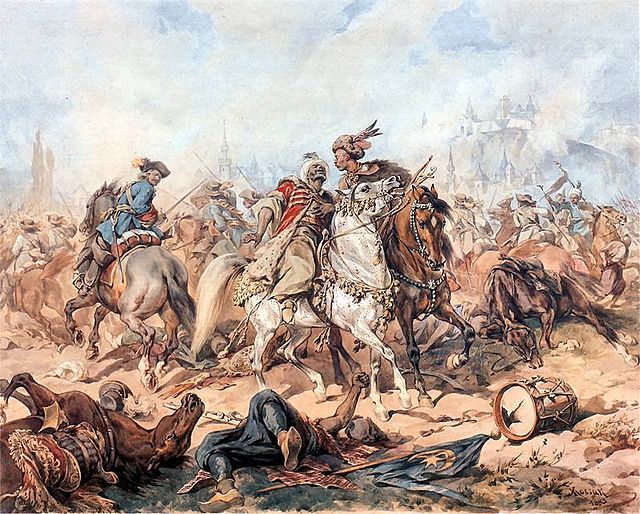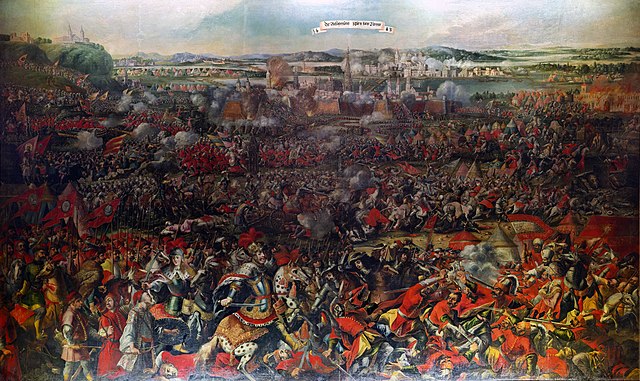Polish–Ottoman War (1683–1699)
Polish–Ottoman War (1683–1699) or the War of the Holy League refers to the Polish side of the conflict otherwise known as the Great Turkish War. The conflict begun with a great Polish victory at the Battle of Vienna in 1683, and ended with the Treaty of Karlowitz, restoring to the Polish–Lithuanian Commonwealth lands lost in the previous Polish-Ottoman War. It was the last conflict between the Polish–Lithuanian Commonwealth and the Ottoman Empire, and despite the Polish victory, it marked the decline of power of not only the Ottoman Empire, but also of the Commonwealth, which would never again interfere in affairs outside of its declining borders.
Battle at Parkany (Štúrovo) (1683), author Juliusz Kossak
Martin: Battle of Yazlovets 1684, Schleissheim Palace collection
The Battle of Vienna took place at Kahlenberg Mountain near Vienna on 12 September 1683 after the city had been besieged by the Ottoman Empire for two months. The battle was fought by the Holy Roman Empire and the Polish–Lithuanian Commonwealth, both under the command of King John III Sobieski, against the Ottomans and their vassal and tributary states. The battle marked the first time the Commonwealth and the Holy Roman Empire had cooperated militarily against the Ottomans. The defeat is often seen as a turning point for Ottoman expansion into Europe, after which they would gain no further ground. In the ensuing war that lasted until 1699, the Ottomans would cede most of Ottoman Hungary to Leopold I, Holy Roman Emperor.
Battle of Vienna, 12 September 1683
Anti-Habsburg Kuruc rebels in Hungary
The plundering of Perchtoldsdorf
The Ottoman Army surrounds Vienna by Frans Geffels






